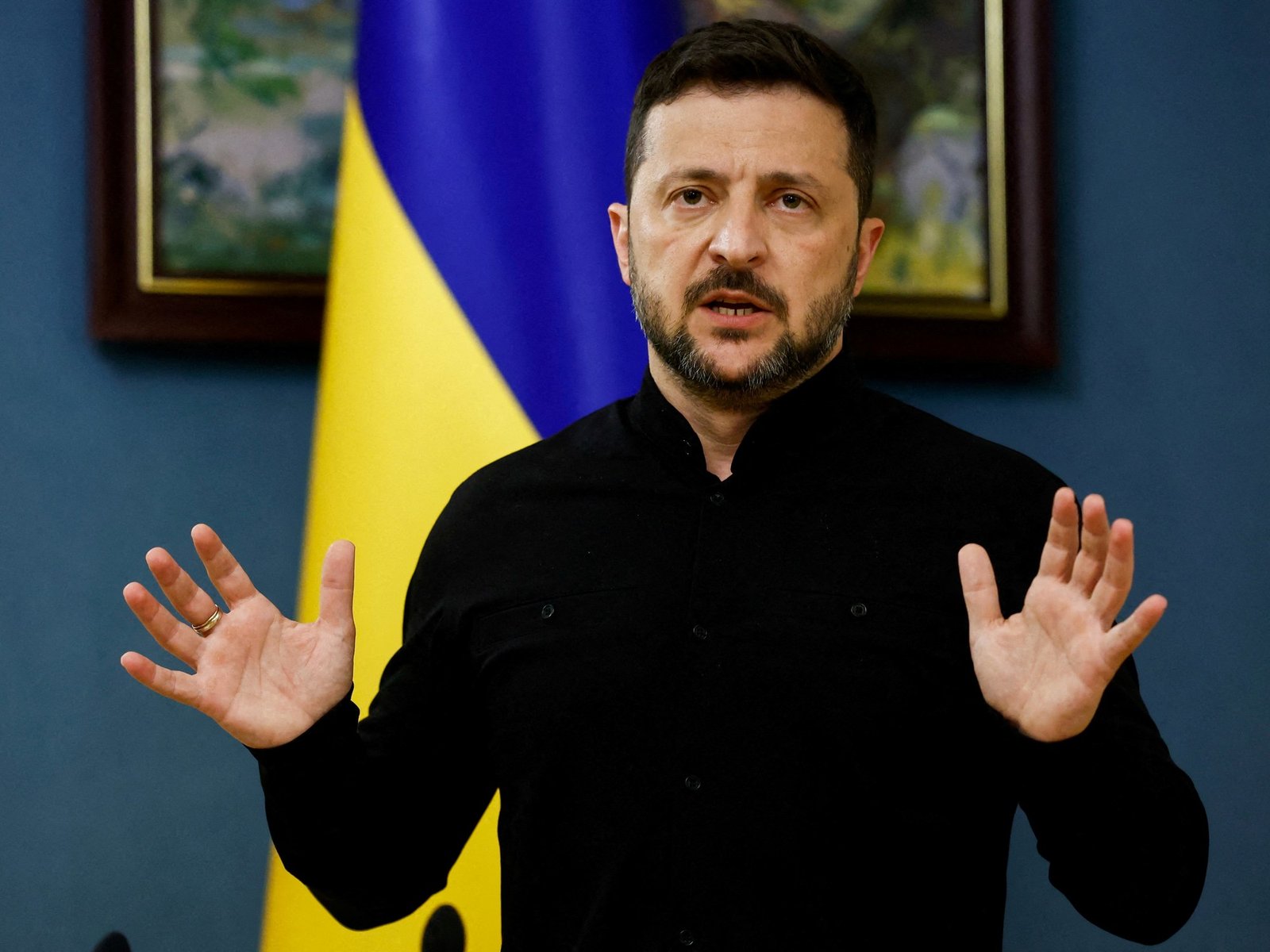INTERNACIONAL
Secreto, jamás reconocido y tolerado por las potencias: cómo es el hermético poder nuclear de Israel

Ni sí ni no. Israel guarda silencio sobre su supuesto poderío nuclear del que nadie duda. Tras el cese el fuego anunciado por Donald Trump, el gobierno israelí simplemente mantiene un absoluto hermetismo sobre su rol de única potencia nuclear en Medio Oriente.
El Instituto Internacional de Investigación para la Paz de Estocolmo (SIPRI), uno de los “think tanks” más influyentes a nivel mundial, calcula que Israel posee 90 armas nucleares.
Es uno de los nueve países que reconocen o fueron identificados como poseedores de este tipo de armamento. La lista la integran, además, Estados Unidos, Rusia, Reino Unido, Francia, China, India, Pakistán y Corea del Norte.
Leé también: El estrecho de Ormuz se vuelve clave en el conflicto en Medio Oriente: pone en alerta a la industria petrolera
En su último informe anual divulgado el 16 de este mes, el SIPRI reveló sus sospechas de que Israel está modernizando su arsenal nuclear. “En 2024 realizó una prueba de un sistema de propulsión de misiles que podría estar relacionado con su familia de misiles balísticos con capacidad nuclear Jericó. Israel también parece estar modernizando su reactor de producción de plutonio en Dimona”, alertó el reporte.
Se trata del Centro de Investigación Nuclear situado en el desierto del Néguev, a unos 10 kilómetros al sur de la ciudad de Dimona. Los israelíes lo conocen como el reactor de Dimona.
Cómo se conoció el programa nuclear israelí
El programa nuclear de Israel dejó de ser un secreto hace más de 40 años. En los años 80 el diario inglés Sunday Times reveló detalles del plan atómico israelí a través de la denuncia del técnico israelí Mordechai Vanunu. ARCHIVO – Esta imagen de archivo tomada de un video emitido el viernes 7 de enero de 2025 por la televisora israelí Channel 10 muestra lo que la cadena afirma es una instalación nuclear israelí en la localidad sureña de Dimona, el primer video detallado del lugar jamás mostrado al público. (Channel 10 via AP, Archivo)
La delación sacudió al gobierno israelí. Vanunu, un antiguo empleado del reactor de Dimona, entregó al periódico británico información secreta y fotos sobre el programa atómico israelí.
La reacción fue drástica. Fue sentenciado por traición y pasó 18 años en la cárcel. La mayoría de su condena la pasó bajo régimen de aislamiento. Al salir de prisión, en 2004, declaró a la BBC: “No traicioné, salvé a Israel de un nuevo holocausto”.
Leé también: El embajador de Israel en la Argentina habló sobre la posibilidad de que Irán cometa atentados terroristas
Idrees Ahmad, académico británico de la Universidad de Stirling especializado en Medio Oriente y autor del libro El camino a Irak: la construcción de una guerra neoconservadora, dijo a TN que antes de la denuncia de Vanunu se sabía que Israel contaba con un arsenal nuclear “plenamente operativo”.
“Israel lo ha utilizado no solo para amenazar a Medio Oriente, sino también a sus aliados occidentales, afirmando que, si se le sometía a demasiada presión, recurriría a la ´Opción Sansón´ (que alude a una supuesta estrategia de disuasión israelí que incluye represalias nucleares masivas ante una amenaza)“, afirmó.
Según el analista, “los gobiernos occidentales hacen la vista gorda porque les resulta incómodo reconocer que Israel tiene un programa nuclear mientras le dicen a Irán, o a otros países, que su programa atómico es un acto agresivo”.
Cómo es el poderío nuclear israelí
Este supuesto poderío nuclear israelí es un secreto.
El SIPRI sueco, así como la Federación de Científicos Estadounidenses, estiman que posee un total de 90 cabezas nucleares.
Hay muy pocos datos confiables disponibles. Las sospechas sostienen que el arsenal es transportable mediante misiles balísticos, aviones de combate y, posiblemente, submarinos capaces de llevar cabezas nucleares. Todo estaría reducido al reactor de Dimona, en pleno desierto.
Leé también: Al arrastrar a Trump a una guerra directa, Irán pone en juego la propia supervivencia de su gobierno
A diferencia de Irán, Israel no es signatario del Tratado de No Proliferación de Armas Nucleares (TNP). Por eso está eximido de las obligaciones impuestas por los países firmantes del pacto y que Teherán violó en varias ocasiones. Irán se sumó al tratado en 1970, nueve años antes de la revolución islámica que instaló en el país el gobierno teocrático de los ayatolás.
Cada estado que adhiere al acuerdo debe renunciar a la fabricación de armas atómicas o, en todo caso, probar que las tenía antes de 1967, un año antes de que el tratado se abriera a la adhesión mundial.
Cuándo empezó Israel a construir sus bombas nucleares
Se cree que Israel comenzó a planear su política nuclear en los años 50, pocos años después de la creación del Estado y de la guerra árabe-israelí que siguió a su fundación en 1948.
Según un informe de The Washington Post, la decisión fue tomada por el entonces primer ministro, David Ben-Gurión. Era una especie de póliza de seguro contra sus vecinos árabes que impulsaban la destrucción del estado de Israel. Israel mantiene un absoluto hermetismo sobre su plan nuclear (Foto: Reuters / Luisa González)
Según el diario de la capital estadounidense, “Israel adquirió en secreto la tecnología y el material para construir armas nucleares, engañando frecuentemente al gobierno estadounidense (y a otros gobiernos) sobre sus intenciones”.
Tras el cierre del Canal de Suez por parte de Egipto en 1956, Francia ayudó a construir el reactor de Dimona, pero Israel se comprometió a no fabricar armas nucleares. Luego, Noruega suministró agua pesada, que ayuda a controlar las reacciones nucleares, bajo las mismas garantías.
Pero Estados Unidos descubrió la instalación secreta a fines de la década del 50. Israel respondió que se trataba de un centro de investigación. Lo que vino después se asemeja a un guión de Holywood.
Por presión del entonces presidente estadounidense, John F. Kennedy, Israel autorizó inspecciones periódicas en Dimona.
Según el reporte, “un equipo concluyó en 1961 que el sitio carecía de las instalaciones necesarias, como el reprocesamiento de plutonio, para un programa armamentístico. Sin embargo, las autoridades estadounidenses exigían inspecciones periódicas para poder garantizar a las naciones árabes, especialmente a Egipto, que Israel no contaba con un programa secreto de bombas”.
Leé también: Mientras Donald Trump detiene a inmigrantes, otro país de la región deporta en silencio a miles de extranjeros
Una nueva inspección fue realizada tres años después con el mismo resultado. “Pero los inspectores operaban bajo la falsa suposición de que Israel no tenía una planta de reprocesamiento de plutonio. En realidad, se construyó una debajo del reactor. Los israelíes habían construido muros falsos alrededor de los ascensores que conducían a esas instalaciones”, dijo The Washington Post.
“Se construyó una sala de control falsa en Dimona, con paneles de control falsos y dispositivos de medición controlados por computadora que parecían medir la salida térmica de un reactor de 24 megavatios (como Israel afirmaba que era Dimona) en pleno funcionamiento. Se realizaron extensas sesiones de práctica en la sala de control falsa, ya que los técnicos israelíes intentaban evitar cualquier error a la llegada de los estadounidenses. El objetivo era convencer a los inspectores de que no existía ni era posible una planta de reprocesamiento químico”, reveló el libro La opción Sanson de Seymour Hersh.
La CIA no tardó en descubrir la farsa, pero ya era tarde. Finalmente, en 1969, el entonces presidente estadounidense Richard M. Nixon y la primera ministra israelí, Golda Meir, firmaron un acuerdo secreto. Israel no probaría sus armas ni las reconocería. A cambio, Estados Unidos pondría fin a sus visitas a Dimona y dejaría de presionar a Israel para que firmara el Tratado de No Proliferación. Desde entonces, Israel es, supuestamente porque nunca hubo una admisión concreta, la única potencia nuclear de Medio Oriente.
Israel, Irán, nuclear
INTERNACIONAL
Volodimir Zelenski insiste en reunirse con Vladimir Putin mientras Rusia intensifica los bombardeos en Ucrania

Contactos en Turquía
Qué se está negociando
Ataques con drones y bombas
INTERNACIONAL
Anti-ICE attackers revealed to have extensive history of radical protest activities

NEWYou can now listen to Fox News articles!
Some members of the group charged in the Prairieland Detention Center anti-ICE attack on Independence Day have been arrested in the past for protest activities.
Ines Soto, who is part of the group of ten charged with attempted murder of federal officers and firearm offenses, was arrested at a protest in 2016 for allegedly resisting arrest and trying to avoid detention, according to K-HOU 11 at the time.
The protest was against a speech by Richard Spencer at Texas A&M University. The outlet My Aggie Nation noted that Soto was 31 in 2016, which corroborates with a KERA News report stating that Soto is now 40 years old and was released on a $10,000 bond.
FBI CAPTURES FORMER MARINE CORPS RESERVIST ACCUSED OF SHOOTING AT ICE OFFICERS AT TEXAS DETENTION CENTER
Ten suspects were charged with attempted murder of a federal officer in connection with the July 4, 2025, ambush attack on the Prairieland Detention Center in Alvarado, Texas. (Johnson County Sheriff’s Office)
Meanwhile, KERA News reported that Savanna Batten partook in the Occupy Wall Street movement through an «Occupy Dallas» protest in 2011, where she was arrested for allegedly not allowing people to come and go from a Chase Bank. The case was ultimately dismissed, as a criminal trespassing charge was scrapped in exchange for 24 community service hours, the outlet reported.
Batten also specifically has a history of anti-ICE activism, as she was charged for allegedly blocking a highway in June 2018 near a Dallas ICE facility, and the charge for that was also dismissed in 2019 as part of a program.
Fox News Digital reported last week that Benjamin Song, who was captured by the FBI last week, had a known protest background. He was named in a 2023 lawsuit over a counter-protest to the New Columbia Movement at a drag brunch in Fort Worth, Texas. The lawsuit noted Song was tied with a pro-arms leftist group, the Elm Fork John Brown Gun Club.
UNEARTHED SOCIAL MEDIA POSTS EXPOSE RADICAL VIEWS OF ANTI-ICE SHOOTING SUSPECT CAPTURED BY FBI

During the Prairieland Detention Center attack, cars were vandalized with anti-ICE messages such as «Ice Pig.» (Justice Department)
In addition, he was also arrested in 2020 during a protest in Austin for allegedly assaulting a public servant, according to Fox 4.
Song’s social media profiles also indicated that he was extremely vocal online about his stances and activism, and also appeared to use a martial arts studio tied to his mother to film tactical exercises.
CLICK HERE FOR MORE IMMIGRATION COVERAGE
«Do you want to end mass shootings? Abolish the police,» he posted in June 2022 under the X handle, BubbleBreakBS.
Song, a former U.S. Marine Corps reservist, is accused of firing two AR-15-style rifles at two correctional officers and one Alvarado police officer, according to a criminal complaint obtained by Fox News Digital.
MORE DETAILS REVEALED ON SUSPECTS IN INDEPENDENCE DAY ICE ATTACK IN TEXAS

Savanna Batten (left) and Ines Soto (right) are both charged with attempted murder and firearms offenses in an anti-ICE Texas attack on July 4, 2025. (Johnson County Jail/)
«Make no mistake, this was not a peaceful protest,» Acting U.S. Attorney Nancy E. Larson said in a July 8 statement. «This was an ambush on federal and local law enforcement officers. This increasing trend of violence against law enforcement will not be tolerated in the Northern District of Texas. Those who use violence against law enforcement officers will be found and prosecuted using the toughest criminal statutes and penalties available.»
CLICK HERE TO GET THE FOX NEWS APP
A local police officer was shot in the neck by a suspect in the woods, according to the complaint. Another assailant allegedly fired dozens of rounds at unarmed correctional officers who had stepped outside the facility. Cars outside the facility were vandalized with «Ice pig» and «Traitor,» as authorities obtained anti-government literature from those involved, as well as a flag that said «Fight Fascism, Fight Oligarchy.»
Fox News Digital’s Greg Wehner and Stephen Sorace contributed to this report.
INTERNACIONAL
De “Hey Jude” a “Hotel California”: 40 letras de canciones que hicieron historia

Hay canciones que pasan a la historia, ya sea por su melodía, por las voces que las interpretan o sus letras. The Independent realizó un ranking de las 40 mejores letras de canciones en inglés de todos los tiempos. Bandas como Nirvana, The Beatles o Abba forman parte del listado. Según el ranking, las canciones se destacaron no solo por su música o interpretación, sino también por la fuerza de sus palabras, capaces de dejar una huella en distintas generaciones.
La lista está encabezada por ‘All Apologies’ de Nirvana. El tema está incluido en el álbum In Utero de 1993. Cobain escribió esta canción dirigiéndose tanto a Courtney Love como a su hija, Frances Bean. Para muchos, este track logra transmitir con especial nitidez el malestar interno y la rabia del músico, a la vez que se entrelaza con una profunda declaración de amor hacia su familia.
Según The Independent, el mensaje contenido en esta canción supera la tragedia personal de Cobain y subraya la permanencia del afecto más allá de la ausencia física. Apenas seis meses después del lanzamiento, el artista se quitó la vida y dejó atrás de sí un tema que muchos consideran imprescindible para comprender el significado de su legado artístico.
El listado continúa con Nine Inch Nails, ‘Hurt’. El tema, escrito e interpretado por Trent Reznor, hace un retrato directo de la autodestrucción y el sufrimiento, elementos presentes desde la primera grabación. Si bien Reznor nunca precisó si el trasfondo hace referencia al consumo de heroína, el texto y la atmósfera de la canción transmiten una carga emotiva que oscila entre el dolor y una poesía sombría.
Joy Division con su hit ‘Love Will Tear Us Apart’ da continuidad al ranking. “¿Por qué el dormitorio está tan frío volteado de tu lado?, ¿Mi sincronización es tan imperfecta, nuestro respeto se ha agotado?“, cita la letra. El sencillo, escrito por Ian Curtis, refleja matices de su propia experiencia personal, marcada por la crisis matrimonial y una inminente tragedia.
La canción sobresale por una combinación de melodía vibrante y una lírica de gran vulnerabilidad. La composición no transmite un mensaje sombrío en sí mismo, sino que transforma su tristeza en una pieza conmovedora, donde la humanidad del autor adquiere toda su dimensión.
Arcade Fire, ‘Sprawl II Mountains Beyond Mountains’ continúa la lista. Junto a la voz de Régine Chassagne, la canción aporta una atmósfera única. La melodía logra materializar emociones latentes y anhelos de escapar de la uniformidad.
El ranking, presentado por The Independent, sigue con Beyoncé, ‘Formation’; Laura Marling, ‘Ghosts’; LCD Soundsystem, ‘Losing My Edge’; Leonard Cohen, ‘So Long, Marianne’; The Libertines, ‘Can’t Stand Me Now’; Kate Bush, ‘Cloudbusting’; Nick Cave, ‘Into My Arms’; The Sisters of Mercy, ‘This Corrosion’ y Sultans of Ping FC con ‘Where’s Me Jumper?’
Seguidamente, el medio español posicionó entre los mejores temas a ‘There Is a Light That Never Goes Out’, de The Smiths; ‘I’m On Fire’ de Bruce Springsteen; ‘Father Lucifer’ de Tori Amos; ‘Black Steel in the Hour of Chaos’ de Public Enemy y ‘Pools (Drank)’ de Kendrick Lamar.
Mientras la comunidad afroamericana afrontaba las consecuencias de políticas conservadoras, Prince decidió abordar en su tema principal cuestiones como la violencia asociada a las pandillas, la pandemia del sida, tensiones políticas y catástrofes naturales. Con este enfoque, el cantante dejó atrás su aislamiento creativo y presentó ‘Sign O ‘The Times’, una canción donde la reflexión social y el comentario sobre realidades urgentes pasaron a primer plano.
En el listado no podían faltar los Rolling Stones. Si bien tienen grandes letras, en ‘Gimme Shelter’ recrean la atmósfera de inestabilidad y amenaza constante de la época. La composición captura el miedo y la incertidumbre de una sociedad al borde de la ruptura. Asimismo consolida el legado de Mick Jagger, Keith Richards y sus compañeros como cronistas musicales de un periodo turbulento.
Si de turbulencias se trata, David Bowie es uno de los artistas que, durante su vida, atravesó momentos turbulentos. Estos periodos fueron de gran inspiración para el músico a la hora de componer. ‘Station to Station’ es una de las canciones grabadas en los días más oscuros de Bowie. El músico lidiaba con su adicción a las drogas en Los Ángeles mientras buscaba refugio en las letras.
El ranking continúa con ‘Supersonic’, de Oasis; ‘Born Slippy’ de Underworld; ‘Landslide’ de Fleetwood Mac; ‘Graceland’ de Paul Simon; ‘Take a Walk on the Wild Side’ de Lou Reed; ‘Every Time the Sun Comes Up’, de Sharon Van Etten; ‘Gloria’ de Patti Smith; y ‘Hotel California’ de Eagles.

Thin Lizzy sigue el listado con ‘The Boys are Back in Town’. Le sigue Nina Simone con ‘Four Women’; St. Vincent ‘Digital Witnesses’; Frank Ocean con ‘Pink + White’. El ranking continúa con ‘Dinner at Eight’ de Rufus Wainwright; ‘It’s Alright Ma’’ de Bob Dylan; ‘The Winner Takes it All’ de Abba y ‘I Wanna Be Adored’ de The Stone Roses.
En los tres últimos puestos se encuentran ‘The World is Yours’ de Nas; ‘When I’m Sixty Four’ de The Beatles y Beck con ‘Loser’. Este último es uno de los éxitos más recordados de Beck. Surgió a partir de una autocrítica espontánea después de escuchar una versión preliminar del tema. El propio músico reconoció sentirse «el peor rapero del mundo» y se definió como “un perdedor”.
Esta percepción no solo alimentó el concepto de la canción, sino que inspiró el famoso estribillo que acabó identificando al tema. A pesar de la aparente falta de coherencia en la letra, la composición logra crear una atmósfera singular gracias a su escritura en flujo de conciencia, un recurso que genera magnetismo incluso en lo absurdo.

 POLITICA3 días ago
POLITICA3 días agoJuan Carlos Maqueda defendió la condena contra Cristina Kirchner: “Hay una sensación de que se hizo Justicia y que no hay impunidad”

 POLITICA2 días ago
POLITICA2 días agoExpulsada del Gobierno, Victoria Villarruel empieza a tomar distancia, pero no tiene proyecto político para este año

 POLITICA2 días ago
POLITICA2 días agoLa CGT evalúa adelantar a octubre el recambio de sus autoridades y define una movilización contra Milei




































